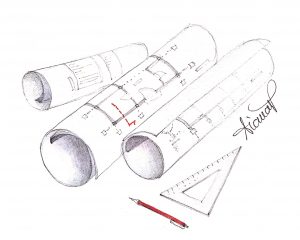Article Source
Write your research paper outline

Publishing papers is a necessary evil for a postgraduate student doing a research doctorate. But as you may have discovered by now, writing your first research paper for a peer-reviewed journal is an uphill marathon.
“Good writing is bad writing well edited”, wrote innovator Kevin Ashton in his book How to Fly a Horse. But before you can edit your paper, you need to put pen to paper, or cursor to screen, and start writing your first draft.
As few things are more daunting for a writer than staring at a blank page, it’s a good idea to use an outline. If your research paper were a building, the outline would be its architectural plan. You can use a research paper outline to design your paper and organize its content in logical sections. As a bonus, you’ll avoid writer’s block, which you tend to get if you stare at an empty page for hours.
Research paper outline example
Here is an example of a scientific paper outline. You can rename the sections to make them more descriptive, though the journal editor may ask you to leave some of them (Introduction, Conclusion, Abstract) unchanged.
Abstract
- Background—one sentence to give context
- Aim or research question
- Summary of findings
- Results
- Conclusion
- Implications/recommendations
Introduction
- Background and recent research relevant to your topic
- Gap/conflict in current knowledge
- Hypothesis/question/aim of the study and WHY it is new
- Proposed solution and your plan to find it
- NO results, NO implications
Data and methods
- The “recipe” for your study to allow your research to be replicated.
Should answer the questions
- Who?
- What?
- When?
- Where?
- How?
- Why?
- Data
- Study design
- Data analysis
Results (or results and discussion)
- Key findings
- Context
- What do the results mean, and why should the reader care?
- Anticipate criticism—what are the weak parts of your results/methods?
- What’s next?
- Big-picture implications of findings
Conclusion
- Summary of findings
- Restate the message of the paper
- Implications, recommendation
- NO discussion, NO detailed results
This research paper outline is just a template, and you need to modify it so it fits your paper. Compare it with similar papers in the journal you want to publish. Also, read the journal’s guidelines for authors, as they might specify the desired manuscript format and structure for a research paper.
Turning the research paper outline into a paper
When writing the first draft of your research paper, it helps to prepare the tables and figures first. Though this may sound counterintuitive, having the figures and tables in front of you as you write helps you get a clear view of your findings. It’s pointless to create professional figures at this stage, but they should be complete. So, label the axes of your graphics, and add units of measurement to your tables.
Once you have your figures and tables at hand, start writing the sections of your paper in this order: results, data and methods, introduction, discussion, conclusion, and—save the best for last—abstract.
If your paper is not open-access, the abstract will be the only section visible to non-subscribers, and even those who have access to the full paper may not read anything else apart from the abstract. To write a good abstract, you need to have a clear idea of the message of your paper and the importance of your results. This is the reason you should write your abstract at the end.
Then, when your first draft is complete, you can start thinking about a good title that highlights the most important findings of your study.
Beyond the first draft: How to write a research paper
Give yourself a pat on the back for completing the first draft. Get feedback from your co-authors. Revise. Get feedback again. Revise. Repeat as necessary. Finalize your figures and tables. Format the references. Edit the paper. Edit it again. Proofread. Submit. Fingers crossed!
Similar posts: